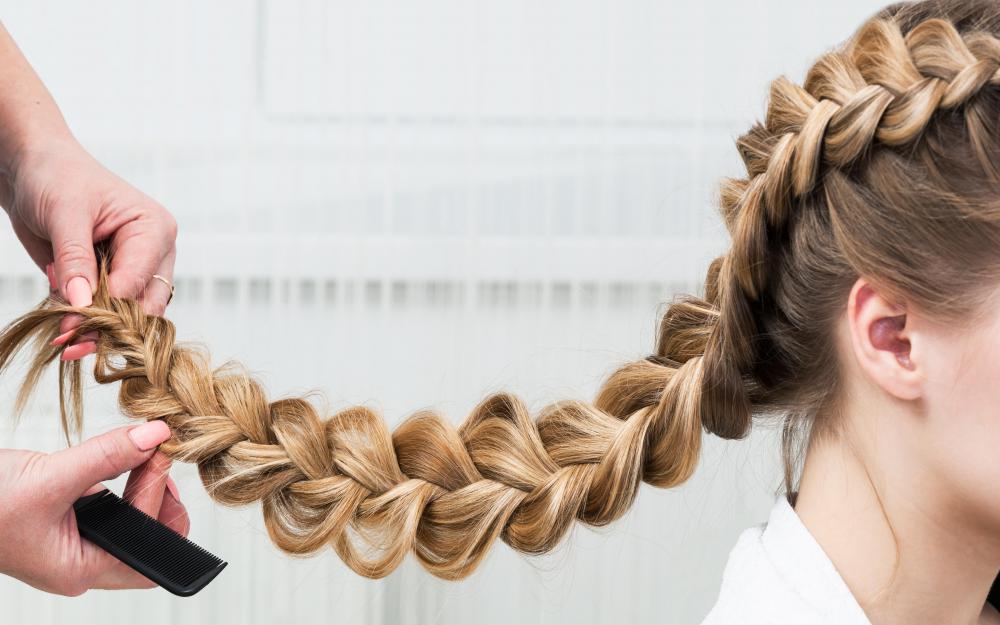At BeautyAnswered, we're committed to delivering accurate, trustworthy information. Our expert-authored content is rigorously fact-checked and sourced from credible authorities. Discover how we uphold the highest standards in providing you with reliable knowledge.
What is a Dutch Braid?
A Dutch braid, sometimes known as an inverted French braid or simply an inverted braid, is a popular braided hairstyle. Similar to a French braid, the Dutch braid consists of three groups of hair braided together to create a single intertwined piece. The basic technique can be used to create a number of different, often exotic looking, hairstyles that can fit any situation and occasion. A Dutch braid can be used on any hair that is strong enough, thick enough, and long enough to support a French braid, and can be done on its own or as part of a more complicated hairstyle.
While in appearance the Dutch braid may seem similar to a French braid, the difference comes in how the left and right strands of hair are interwoven with the middle piece. A French braid weaves the three strands of hair together with the sides over the middle piece. The Dutch braid, however, brings the side pieces under the middle part.

To create a Dutch braid, a person begins by selecting the area of hair that he or she wishes to braid. The stylist may want to start with a fairly large area for the first time, while getting a feel for how to braid the hair. It is also often advised to use some smoothing cream on the hair, though not on the scalp, to control any frizzy or stray hairs. The hair is then divided into three sections, a middle section and a section to both the left and right of it.

A braid is then made by bringing the right strand across under the middle piece, and then the left strand is similarly brought under the middle. More hair is added to the left and right strands and they are again brought across under the middle piece. This process is repeated until the braid is finished. Once complete, a bit more smoothing cream and hair spray may be used to make the final braid appear more tidy and neat.
The Dutch braid can also be used as the foundation of many other hairstyles. Cornrows are typically formed through the creation of small rows of hair woven into Dutch braids. The braid may also be created in a circle around the top of the head to create a ring known as a Dutch crown braid. There are numerous variations and improvisations that can be made through the use of this technique and anyone making a Dutch braid should feel inclined to experiment and have fun with this style.
AS FEATURED ON:
AS FEATURED ON:












Discuss this Article
Post your comments